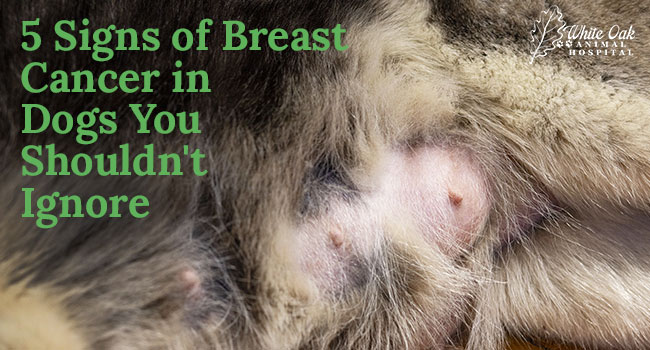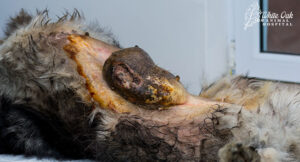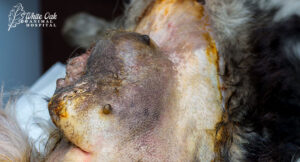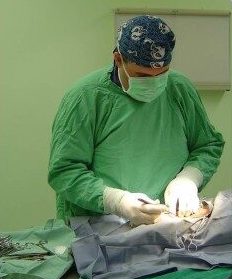
In the realm of canine health, one prevalent concern among pet owners is the specter of breast cancer in dogs. This ailment, akin to its human counterpart, poses a significant threat to the well-being of our furry companions. Understanding its nuances and the pivotal role of early detection is paramount in safeguarding their health.
Breast cancer in dogs, known scientifically as mammary gland tumors, manifests in various forms and can affect both male and female canines. However, it is notably more common in intact (unspayed) female dogs. Despite its prevalence, many pet owners may not be aware of the signs and symptoms, underscoring the critical importance of education and vigilance.
This introduction sets the stage for delving into the five signs of breast cancer in dogs that should not be overlooked. By recognizing these indicators and seeking prompt veterinary attention, pet owners can play a proactive role in ensuring the well-being of their beloved companions.
Understanding Breast Cancer in Dogs
 Breast cancer in dogs, medically termed mammary gland tumors, refers to abnormal growth within the mammary glands. These tumors can vary in type, including benign and malignant forms. Malignant tumors, or cancerous growths, pose a more severe threat to a dog’s health.
Breast cancer in dogs, medically termed mammary gland tumors, refers to abnormal growth within the mammary glands. These tumors can vary in type, including benign and malignant forms. Malignant tumors, or cancerous growths, pose a more severe threat to a dog’s health.
Among female dogs, breast cancer is notably more prevalent, particularly in those who have not been spayed. Hormonal influences play a significant role in the development of these tumors. However, it’s essential to note that male dogs can also develop mammary gland tumors, albeit less frequently.
Understanding the prevalence and types of breast cancer in dogs is crucial for pet owners. It underscores the importance of proactive measures such as regular veterinary check-ups and awareness of potential symptoms. By staying informed, pet owners can take necessary steps to safeguard their furry companions against this formidable health concern.
Common Symptoms of Breast Cancer in Dogs
 Lump or mass in mammary glands: One of the most noticeable signs of breast cancer in dogs is the presence of a lump or mass in the mammary glands. These lumps may vary in size and texture and can be detected through careful palpation during grooming or petting sessions.
Lump or mass in mammary glands: One of the most noticeable signs of breast cancer in dogs is the presence of a lump or mass in the mammary glands. These lumps may vary in size and texture and can be detected through careful palpation during grooming or petting sessions.- Swelling or enlargement of mammary glands: Alongside the development of lumps, breast cancer in dogs often manifests as swelling or enlargement of the affected mammary glands. This swelling may be accompanied by redness or heat in the area.
- Discharge from nipples: Another telltale sign of breast cancer in dogs is the presence of discharge from the nipples. This discharge may be bloody or pus-like and can occur spontaneously or upon manipulation of the affected area.
 Changes in nipple color or texture: Dogs with breast cancer may also exhibit changes in the color or texture of their nipples. These changes can range from darkening or reddening of the nipples to alterations in texture, such as roughness or ulceration.
Changes in nipple color or texture: Dogs with breast cancer may also exhibit changes in the color or texture of their nipples. These changes can range from darkening or reddening of the nipples to alterations in texture, such as roughness or ulceration.- Behavioral changes: In some cases, dogs with breast cancer may display changes in behavior that could signal underlying discomfort or distress. These behavioral changes may include lethargy, decreased appetite, reluctance to exercise, or increased vocalization.
Pet owners must monitor their dog’s health and promptly consult a veterinarian if any of these symptoms are observed. While these signs may indicate the presence of breast cancer, they can also be caused by other medical conditions. A thorough veterinary evaluation, including physical examination and diagnostic tests such as imaging and biopsy, is necessary to confirm a diagnosis of breast cancer in dogs.
By familiarizing themselves with these common symptoms and taking prompt action, pet owners can play a crucial role in ensuring the early detection and treatment of breast cancer in their beloved canine companions. Early intervention improves the prognosis and enhances the quality of life for dogs affected by this challenging condition.
Risk Factors and Predispositions
 Breed predispositions: Certain dog breeds are more prone to developing breast cancer than others. Breeds such as poodles, dachshunds, and spaniels have been found to have a higher incidence of breast cancer in dogs. However, it’s important to note that breast cancer can affect dogs of any breed or mixed breed.
Breed predispositions: Certain dog breeds are more prone to developing breast cancer than others. Breeds such as poodles, dachshunds, and spaniels have been found to have a higher incidence of breast cancer in dogs. However, it’s important to note that breast cancer can affect dogs of any breed or mixed breed.- Age considerations: Age is another significant risk factor for breast cancer in dogs. While mammary gland tumors can occur at any age, they are more commonly diagnosed in older female dogs, particularly those who have not been spayed. The risk of developing breast cancer increases with age, highlighting the importance of regular veterinary check-ups as dogs grow older.
- Hormonal influences: Hormonal influences play a pivotal role in the development of breast cancer in dogs. Female dogs that have not been spayed are at a higher risk due to prolonged exposure to estrogen and progesterone hormones. Spaying (ovariohysterectomy) at an early age significantly reduces the risk of breast cancer in dogs by eliminating hormonal fluctuations.
 Environmental factors: Environmental factors such as exposure to certain chemicals or toxins may also contribute to the development of breast cancer in dogs. While the exact ecological triggers are not fully understood, minimizing exposure to potential carcinogens and providing a safe and healthy living environment for dogs can help reduce the risk.
Environmental factors: Environmental factors such as exposure to certain chemicals or toxins may also contribute to the development of breast cancer in dogs. While the exact ecological triggers are not fully understood, minimizing exposure to potential carcinogens and providing a safe and healthy living environment for dogs can help reduce the risk.
Diagnosis and Treatment Options
Diagnosing and treating breast cancer in dogs requires prompt attention and informed decisions. Veterinary examination, including imaging and biopsy, is crucial for diagnosis. Treatment options such as surgery, chemotherapy, and radiation aim to address the cancer effectively. Prognosis varies depending on factors like cancer stage and overall health.
While some dogs respond well to treatment, others may face challenges like recurrence or metastasis. Collaborating closely with a veterinarian helps tailor a treatment plan suitable for the dog’s needs. By prioritizing early detection and seeking appropriate treatment, pet owners can enhance their dog’s chances of a positive outcome in the face of breast cancer.
Prevention and Management Strategies
 Preventing and managing breast cancer in dogs involves adopting proactive strategies to minimize the risk and promote overall well-being. Spaying female dogs at an early age significantly reduces the likelihood of developing breast cancer. Additionally, maintaining a balanced and nutritious diet and providing ample opportunities for exercise are essential for supporting a dog’s immune system and overall health, potentially reducing the risk of cancer.
Preventing and managing breast cancer in dogs involves adopting proactive strategies to minimize the risk and promote overall well-being. Spaying female dogs at an early age significantly reduces the likelihood of developing breast cancer. Additionally, maintaining a balanced and nutritious diet and providing ample opportunities for exercise are essential for supporting a dog’s immune system and overall health, potentially reducing the risk of cancer.
Regular veterinary check-ups are crucial in early detection and intervention, allowing veterinarians to monitor your dog’s health and promptly address any concerns. By incorporating these proactive measures into your dog’s care routine, you can take meaningful steps towards safeguarding their health and minimizing the impact of breast cancer.
 Being vigilant about the signs of breast cancer in dogs is crucial for early detection and treatment. By recognizing the symptoms and seeking prompt veterinary care, pet owners can ensure the best possible outcome for their furry companions. We encourage pet owners to consider White Oak Animal Hospital for comprehensive care and support. With over 28 years of experience and a commitment to integrative options, including TCVM Telemedicine consultations, White Oak Animal Hospital offers unparalleled expertise in managing breast cancer in dogs. Our dedicated team is here to provide compassionate care and guidance every step of the way. Together, we can work towards protecting the health and well-being of your beloved canine companion.
Being vigilant about the signs of breast cancer in dogs is crucial for early detection and treatment. By recognizing the symptoms and seeking prompt veterinary care, pet owners can ensure the best possible outcome for their furry companions. We encourage pet owners to consider White Oak Animal Hospital for comprehensive care and support. With over 28 years of experience and a commitment to integrative options, including TCVM Telemedicine consultations, White Oak Animal Hospital offers unparalleled expertise in managing breast cancer in dogs. Our dedicated team is here to provide compassionate care and guidance every step of the way. Together, we can work towards protecting the health and well-being of your beloved canine companion.
Frequently Asked Questions
Can male dogs get breast cancer?
Yes, although less common, male dogs can develop breast cancer. The mammary glands in male dogs are typically less developed than in females, but they can still develop tumors.
What are the chances of survival for dogs with breast cancer?
The prognosis for dogs with breast cancer varies depending on factors like the stage of the cancer, the effectiveness of treatment, and the overall health of the dog. Early detection and prompt treatment generally yield better outcomes.
Can breast cancer in dogs spread to other parts of the body?
Yes, breast cancer in dogs can spread (metastasize) to other parts of the body, including the lymph nodes, lungs, and bones. This emphasizes the importance of early detection and prompt treatment.
Related Posts
-
5 Alarming Signs of Cat Skin Cancer: Early Detection is Key
The importance of early detection in managing cat skin cancer cannot be overstated. As pet…
-
The Top 5 Signs of Cancer in Dogs: A Countdown to Awareness
Understanding the signs of cancer in dogs is crucial for pet owners. Early recognition of…
-
Personalization and Success: 5 Reasons Why Holistic Cancer Treatment for Dogs is the Best Choice
Holistic cancer treatment for dogs is a distinct and personalized approach that stands out amidst…
-
Unveiling 5 Types of Lymphoma Cancer in Dogs: A Comprehensive Guide to Enhancing Quality of Life
Lymphoma cancer in dogs affects their lymph nodes and lymphatic system, which are essential for…









